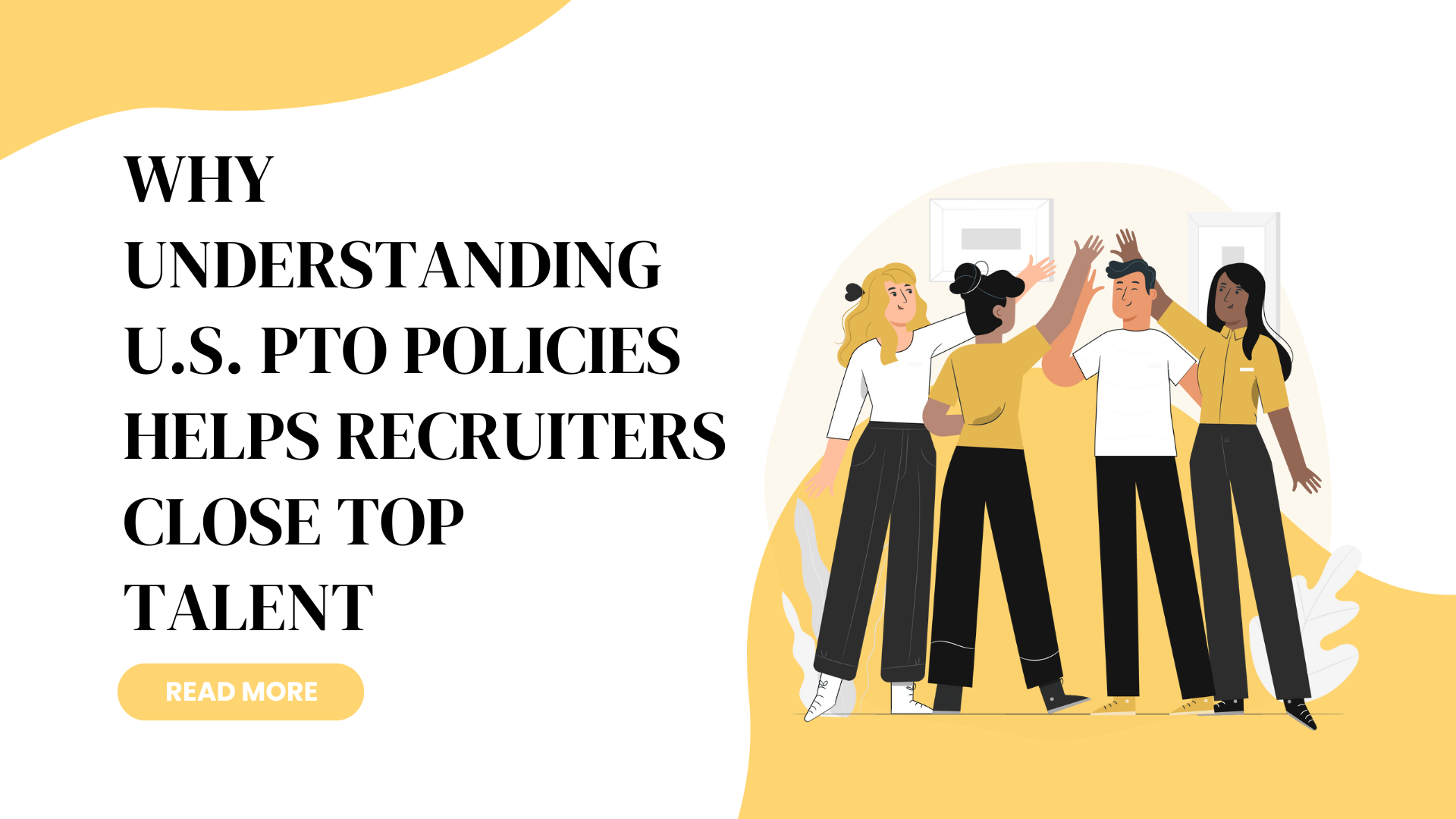In a tight labor market, benefits can be the difference between winning or losing a top U.S. candidate. And when it comes to benefits, paid time off (PTO) is one of the most scrutinized – and misunderstood – components.
For recruiters placing talent into the U.S., understanding the basics of PTO isn’t just a “nice to have” – it’s a strategic advantage. While you may not set the policy yourself, the ability to explain and advocate for a strong PTO offering can improve candidate engagement and drive offer acceptance.
Why PTO Is a Deciding Factor for U.S. Candidates
The U.S. doesn’t mandate paid vacation at the federal level, which means policies vary widely – and candidates know it.
PTO is no longer seen as a perk; it’s a core part of how candidates assess employer values and culture. In fact:
- 62% of U.S. job seekers say PTO is a deciding factor in accepting a role
- Burnout rates remain high post-pandemic, making time off a major priority
- Candidates often use PTO policies to evaluate employer empathy and flexibility
For recruiters, that means PTO isn’t just a box to tick – it’s a key selling point in competitive offers.
What Makes U.S. PTO So Complex?
Here are a few things that surprise many non-U.S. recruitment teams:
There is no national standard in the US. Some companies offer 10 days, others offer 25. There’s no baseline, so it’s entirely up to the employer, unless state laws say otherwise.
State-by-state differences:
- California requires unused vacation to be paid out on termination
- Massachusetts mandates paid sick leave for companies with 11+ employees
- New York City requires even small employers to offer paid sick time
Sick leave and vacation leave are often separated, and companies may offer them from different “banks” of time.
If a candidate works remotely in a different state, the laws of their location apply – not where the employer is based. This can be a lot for any recruiter to manage – especially across time zones or jurisdictions. That’s why most work with an Employer of Record.
What Makes a PTO Policy Attractive?
A “strong” PTO policy doesn’t always mean “unlimited” – but it should be:
- Clear enough so candidates understand how it works – accrual, eligibility, approvals.
- Fair: Applied consistently across roles, locations, and seniority levels.
- Benchmarked against industry norms (often 15+ days per year, plus sick leave and public holidays).
- Aligned with U.S. state and local regulations, which vary widely.
If your client’s PTO policy checks these boxes, it gives you a compelling story to tell candidates — and helps set expectations early in the process.
How to Talk About PTO with Candidates
You don’t need to be an employment lawyer – but it helps to be prepared for questions like:
“How many vacation days do I get?”
Know the basics of the PTO structure (e.g. accrual or lump-sum), and when it kicks in.
“Is sick leave separate?”
Many companies split sick and vacation leave; a separate sick leave allowance is a plus.
“What about state-specific laws?”
You can assure the candidate that PTO policies are compliant with their local laws – that’s handled by your EOR.
“How does unlimited PTO actually work?”
If applicable, explain the approval process and cultural norms around taking time off – as candidates may worry about whether they’re truly allowed to take it.
Examples of Common U.S. PTO Models
These are some common structures you may need to understand:
- Accrual-Based PTO – Employees earn PTO over time (e.g., 1.5hrs of PTO of every hour worked). Common in growing teams and easy to manage.
- Lump-Sum PTO – Employees get all their PTO at the start of the year. Simpler, but less flexible if an employee leaves early.
- Unlimited PTO – Employees can take time off as needed, with manager approval. High-trust model, but expectations must be clearly defined.
Ready to Simplify U.S. Placements?
If you’re a recruitment firm placing candidates in the U.S., a good EOR solution gives you everything you need to ensure benefits like PTO are fully compliant, competitive, and clearly communicated – so you can focus on what you do best: placing great talent. Get in touch with our team today.

